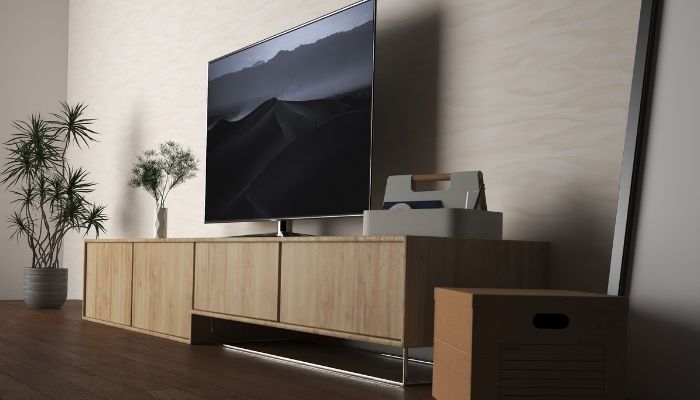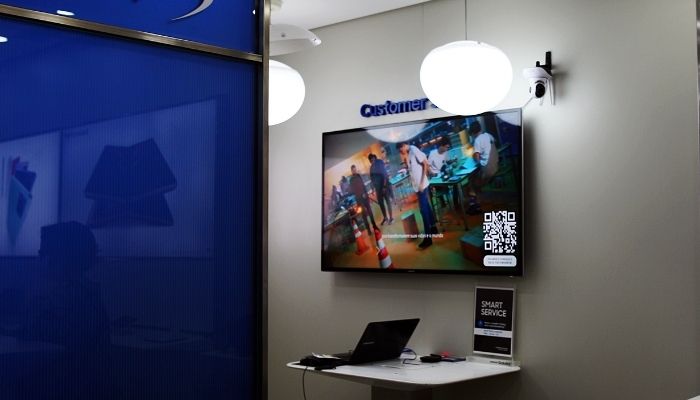LCDs, which stand for liquid-crystal displays, can display visual content with an exceptional level of quality and clarity.
LCDs can be found in various devices, ranging from televisions to smartphones; they have become the industry standard for both kinds of recreation and visual technology.
These displays use standard components and are typically not difficult to fix if they start to lose their brightness. Therefore, I will discuss How to Fix a Dim LCD Display here in this article.
In recent years, LED technology has undergone significant advancements, which have resulted in both enhanced quality and decreased prices.
LED lights require a more considerable initial financial investment, but they typically have a lifespan of roughly 100,000 hours.
LCDs are less expensive and are more commonly used. The average lifespan of a liquid crystal display, or LCD, screen is approximately 50,000 hours.
What Exactly Is a Malfunctioning Display?
A screen is considered defective if it does not function as it should or does not function at all, and there are no apparent symptoms of physical harm to the screen.
Some common display faults are image or color distortion, pixelization, resolution lines, problems with the backlight, or a blank screen.
Do the LED Displays Become Less Bright Over Time?
The “white” LEDs utilized in LCDs will gradually lose their brightness as time passes. However, the lifetime of blue LEDs has always been a significant obstacle that has held the technology back. It is because blue LEDs dim more quickly than red and green LEDs.
Reason for LED Fade Displays
The brightness of LED displays can dim for several reasons, including premature aging, faulty internal components such as a capacitor or LED arrays, or the more typical issue of loose wiring. The presence of high-load devices on the circuit might also contribute to the dimming of LED lights.
Why Is the Display on My LCD So Dim?
You can alter the brightness of your LCD screen with the Fn key combination on your keyboard if you are running your system off of the battery power and you find that the screen is too dim.
By default, portable LCDs have their brightness set to their maximum level when powered by AC power, but this level is reduced to less than half when powered by batteries. When powered by the battery, the ALS is typically disabled.
Fixes to Getting Rid of Dim LCD Display

Following are different ways to Fix a Dim LCD Display.
Method 1: By Using Ambient Light Sensors
The LCD can be automatically dimmed and brightened by the Ambient Light Sensors, which are sensors that measure the amount of usable light in the workspace and adjust the display’s brightness in response to the amount of light that the system is experiencing.
The dashboard lights of the vast majority of modern autos can be brightened or dimmed using comparable controls. Complaints concerning ambient light sensors on LCDs can, in most cases, be traced back to the light source intensity rapidly changing, and the LCD is attempting to cope with the variations.
Suggestions to Fix a Dim LCD Display
The following are some suggestions that you can use to assist remedy issues with the working of the ambient light sensor that causes the LCD to flicker or get dull.
- On a day when the sky is partly cloudy, if the system is positioned next to a window, covering the curtains or blinds should solve any problems created by the shifting cloud cover.
- You can modify the brightness of your LCD screen with the Fn key combination on your keyboard if you are running your system off of the battery power and you find that the screen is too dim.
- By default, portable LCDs have their brightness set to their maximum level when powered by AC power, but this level is reduced to less than half when powered by batteries. When powered by the battery, the ALS is typically disabled.
- If you cannot maintain control over the shifting light conditions, you may need to deactivate the Ambient Light Sensor (Working outdoors, etc.) This capability, known as ALS enabled/Disabled, is managed in the BIOS of most portable computer systems.
- You can enable or disable the ALS sensor using the on-screen display controls of a desktop LCD equipped with the feature. The ALS is not always visible on the bezel surrounding the monitor on a desktop LCD.
Method 2: By Troubleshooting Backlight
Failure of the fluorescent backlight, also known as a CCFL, is a common cause of dark LCD screens and is referred to by its technical name.
When dealing with a computer or laptop display, you should consult the paperwork provided by the manufacturer for instructions on how to remove any outer shell and, if required, the screen itself.
The LCD controller board or a copper ground could get in your way if you’re not careful. Follow the steps outlined below to understand How to Fix a Dim LCD Display?
- To access the CCFL bulb, carefully move these items away until they are no longer in your way.
- Depending on the screen you’re using, the bulb may or may not fit in its slot.
- Remove the rubber caps from either end of the old bulb carefully, then reattach them to the new bulb in their original locations.
- You’ll need to plug in a power cord connector at one end.
- Finally, test your LCD module by carefully replacing the CCFL and other components. It should be able to regain some of its previous radiance.
Method 3: By Testing LCD Screen
A dim display on an LCD panel may also be caused by problems with other components, such as capacitors, transistors, and inverters.
You may establish whether or not some of these parts are operating correctly by measuring the amount of electric current flowing through them using the appropriate electrical devices, such as a voltmeter.
Even though it is easy to replace these parts if you have sufficient skill, you run the risk of irreparably damaging your LCD if you make an error while doing so. If you do not have the appropriate professional training, you might consider going to a repair shop.
Method 4: By Verifying the CCFL Power Supply
Even if changing the bulb doesn’t solve the problem, there may be another fault with the hardware that is causing the screen to be too dark.
You will need to disassemble your display module and check the power cord attached to the CCFL to confirm that it is linked correctly.
It should maintain contact with metals or a lead on the bulb itself, and it should not connect to the rubber caps, as this will either obstruct or slow down the passage of power to the bulb.
Method 5: By Evaluating the Power Supply for LCD
You should check the power supply of your LCD if this doesn’t fix your problem. When working with a television or a stand-alone monitor, this becomes of the utmost importance.
All that needs fixing may be the cord that connects to the outlet. If the problem is more severe, the power board within an LCD TV may need to be replaced.
If the warranty on your equipment has expired, please see the documentation provided by the manufacturer for further information.
Method 6: By Resetting the LCD Display
When troubleshooting a problem with the LCD that is dark or dim, follow this technique.
- You may set the level of brightness on the LCD.
- You need to remove the unit from the base unit and then replace it to reset it.
- If the LCD screen still shows too much darkness or dimness, you might need service.
Safety Measures
- When considering whether or not to fix a flat LCD screen, it is in your best interest to proceed with extreme caution. Improving specific displays is more accessible than others, while you should not attempt others.
- As much hot air as possible should be avoided coming into contact with the LCD itself, as this could cause damage.
- Handle ancient displays with care, whether on vintage cellphones or any other type of legacy LCD.
- A professional should do repairs because you could permanently harm these products if you do them yourself. For the same reasons, newer screens can be ruined irreparably by simple carelessness and ignorance.
- Do not open the device if a warranty still covers you on the screen. Make a call to your manufacturer and request a repair from them.
Cost to Fix an LCD
LCD, LED, plasma, and 4K TVs all have prices ranging from $60 to $350 on average. Repairs for common issues include replacing the screen and the bulb and the backlight, HDMI port, and motherboard, respectively.
Do LCD Monitors Ever Need to be Replaced?
LCD screen screens have an expected lifespan ranging from 30,000 to 60,000 hours on average. Because powerful lamps produce the images on LCD screens, some wear will be visible over time.
Frequently Asked Question
Why Is My LCD Display Dim?
You can change the brightness with the Fn Key keystrokes if the system runs on battery power and the LCD is too dim. Standard settings for battery-operated portable LCDs are half the brightness of their AC counterparts. Batteries typically inhibit ALS.
Which Last Longer LED or LCD?
This advancement in LED technology has resulted in better quality and lower costs in recent years. LED requires a more significant initial outlay, but it has a much longer expected useful life of roughly 100,000 hours. LCD is less expensive and more widely accepted. About 50,000 hours of use is the average life expectancy of an LCD screen.
Why Do LEDs Get Dimmer Over Time?
Lumen deterioration will cause LED bulbs to progressively dimmer over time until they quit working entirely. The L70 rating of most LEDs indicates how many hours the bulb will endure before it loses 70% of its initial light output. LEDs with an L70 rating will last longer.
Conclusion
A gradual decrease in brightness is a common problem with LCDs; in such cases, LCDs become dim. However, this usually occurs over a long period, not a matter of weeks or months.
If the display on your LCD is too dim, you may do a few things, but implementing ambient light sensors will give you the best results. Any of the approaches mentioned above can be used to resolve a Dim LCD Display.

